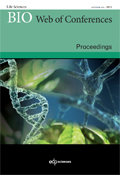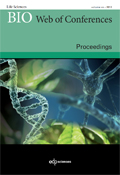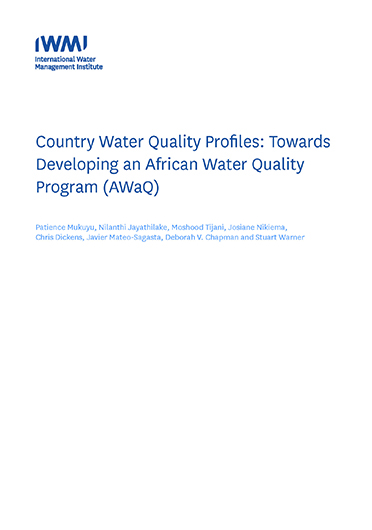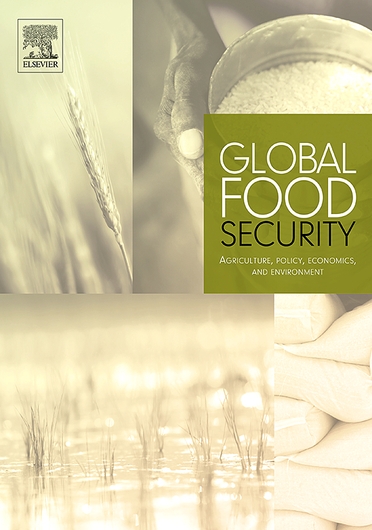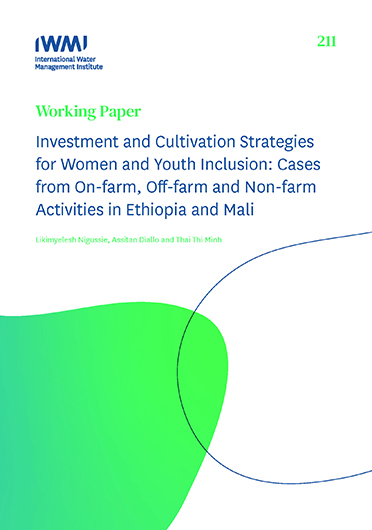IWMI in Middle East
and North Africa

Water has always posed great challenges for the Middle East and North Africa (MENA). It is the most water-scarce region in the world due to its population growth, rising agricultural demand, water infrastructure and water management practices and in particular, the agricultural sector (the largest water consumer). Meanwhile, this region is one of the global climate change hotspots with clear signs of changing climate with uneven and rarer rainfall, and frequent climate extremes of drought and floods. This has become the harsh reality and the new normal according to most research. With most of the economies in the region identifying as developing, with ambitious growth agenda, booming population and zealous needs and aspirations, water and climate-smart solutions play a key role in accommodating natural resources fragility and the expectations behind the national development plans.
Being based in Cairo-Egypt, the MENA office of IWMI supports the MENA countries in resolving the aggravating water security challenges by providing innovative water solutions that respond to regional challenges and national priorities. Our work in the MENA region is guided by IWMI’s mission: “To provide solutions for sustainable, climate-resilient development”.
Through multidisciplinary team across the MENA region and the larger team in other regional offices and the Headquarters, IWMI MENA will keep intensifying its efforts to deliver water solutions and expand and deepen its impact by combining research with data to enhance knowledge, information services and products; strengthen capacity and set up dialogue for better water management. We are shaping our research around IWMI’s three strategic programs in the MENA region: 1) Water, Food and Ecosystems; 2) Water, Climate Change and Resilience; and 3) Water, Growth and Inclusion.
At IWMI we believe that no impact scale can be achieved by acting alone, and we are confident that through strengthened partnerships, we can bridge the gap between science, policy, business, and development for a more sustainable resilient future. IWMI MENA Office will continue to develop strategic alliances with national and international partners and stakeholders across the MENA region and beyond while considering the region and countries specificities. Our partnerships rely on collaboration among scientists, governments, civil society, businesses, development organizations, and users including smallholders.
Our future in the MENA region hinges on transformation from convergence of water security stresses and risks to a future of sustainable, climate resilient and inclusive development.
Dr. Youssef Brouziyne, Regional Representative & CGIAR Water System Lead in MENA region
In the MENA region, it is expected that the occurrence of extreme weather events (such as floods and droughts) will increase as a result of climate change. Increased flooding contaminates water sources and destroys sanitation facilities, while droughts amplify water scarcity with serious impacts on health and agricultural productivity. Smallholder farmers are particularly vulnerable to the impacts of climate change. Approximately 85% of the region’s water is used for irrigated agriculture, even though this might vary locally. Still, agriculture is the largest water user and polluter. However, due to highly inefficient use, more than half of the irrigation water is lost. Countries extract groundwater faster than it is replenished. Also, untreated wastewater is discharged into the environment, causing health hazards and wastage of water. In addition, approximately 82% of the region’s wastewater is neither used nor treated and there is room for improvement, and this could help to close the gap between water supply and demand. About 80% of surface water resources and 66% of total water resources in the region are shared between countries, leading to disputes over water resources. By 2050, two-thirds of countries in the MENA region could have less than 200 cubic meters (m3) of renewable water resources per capita per year (the annual average in other geographical regions is about 7,000 m3 per capita).
Water accounting and auditing tools examine the status and trends in water supply, demand, accessibility and use, including water governance. This information is critical for planning sustainable water management interventions. Collective and integrated approaches to sharing and managing water resources are critical for supporting development and reducing the risk of conflict. However, many countries do not have adequate knowledge on how much water is being used and how much is available for future use, and this makes approaches to water management challenging. IWMI is working with eight countries in the region to better understand their water situation. In collaboration with FAO, IWMI aims to build the capacity of countries to design and implement tailor-made water accounting systems through a process that brings together stakeholders in the water sector to share reference data, and water governance strategies and plans. In the long term, the countries will aim to develop regional approaches to water management that maximize economic and social progress without compromising ecosystem services. In addition, in partnership with the International Institute for Applied Systems Analysis (IIASA), IWMI is analyzing the impact pathways of sustainable agricultural intensification options across scales through examining and identifying water and land management solutions to support the transformation of food systems. This work will include the setting up of integrated assessment models (Community Water Model [CWatM]) for selected river basins in the world to analyze impact pathways of changes in resource availability and management of water systems, with an emphasis on agricultural, water and land management solutions across scales.
Our Projects
Publications
